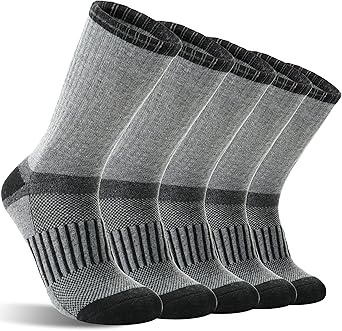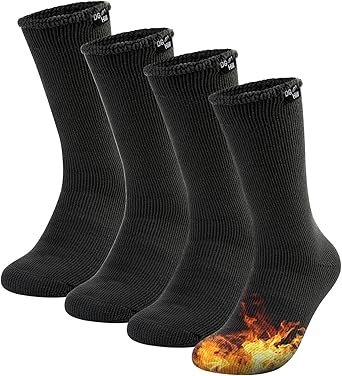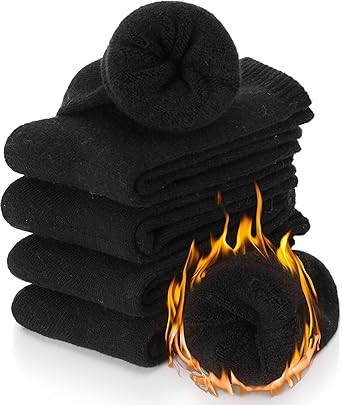Socks (sports for walking)
Choosing the right hiking or trail socks is essential to ensuring comfort and avoiding blisters. Here are some tips:
- Material: Opt for socks made from synthetic materials or merino wool. They offer better moisture management and insulation, keeping your feet dry and warm.
- Fit: Socks should fit snugly, without being too tight or too loose. This helps prevent slipping and blisters.
- Length: Higher socks can offer additional protection against scrapes and insect bites. Consider the type of boots you’ll be wearing.
- Cushioning: Socks with extra padding in high-impact areas (like the heel and toes) can increase comfort on long hikes.
- Seams: Choose socks with flat or seamless seams, as this reduces the chance of irritation and discomfort.
- Breathability: Look for socks with ventilation zones to help air circulate and reduce heat and moisture build-up.
- Specific use: There are socks designed for different conditions (hot, cold, wet). Choose based on the weather and terrain of the trail.
- Testing before the hike: Wear your socks on shorter hikes before a longer hike to ensure they are comfortable and functional.
- Replacing: Pay attention to how your socks wear out. Old socks can lose their effectiveness and cause discomfort.
- Quantity: Carry more than one pair in your backpack, to change during the hike if necessary. Dry socks help prevent blisters and irritation.
These tips will help ensure that your hikes and hikes are more enjoyable and comfortable!









